Proper worm bedding is crucial for a flourishing vermicompost bin.
In fact, bedding in a worm bin is just like the foundation of a home. If the foundation is poorly constructed, the house probably won’t last very long (and your reg wigglers won’t be happy).
As a matter of fact, about 50% of a worm’s diet consists of bedding alone. Using the wrong bedding materials can result in unproductive worms, meaning no worm castings for the garden or worm tea. Even worse, it could lead to worms dying off.
Sourcing bedding material for a worm bin doesn’t have to break the bank. You can probably find most options for free or cheap in your community!
Jump Ahead To...
5 Important Worm Bedding Guidelines to Follow
Before we get to the list of vermicompost bin bedding options, there are a few key items to be aware of before building the bedding.
Ensure your bin bedding follows these guidelines for productive worms and healthy castings:
1. Diversity of Worm Bin Bedding
Worm bin beddings should be composed of several different types of materials. Beddings consisting of just one item (like bedding entirely made of grass clippings) run the risk of being too moist, too dry, or lacking important elements like nitrogen, carbon, or oxygen.
2. Carbon to Nitrogen Ratio
Vermicompost bins should have a carbon to nitrogen (C:N) ratio of around 50:1. That’s significantly more carbon than regular compost bins.
This ratio ensures temperatures stay between 50-90 degrees Fahrenheit, where red wigglers thrive. Less carbon and more nitrogen would cause the bin to heat up, potentially killing off worms.
3. Appropriate Moisture Level
Vermicompost bin bedding materials should have the same moisture level as a wrung out, damp sponge.
Technically, the moisture level should be at 80% if measuring on a moisture meter. Don’t have one of those laying around?
Check to ensure there is no standing water in the bin. Contents should feel moist, but no water should drip out when squeezed.
4. Proper Oxygen Flow
Finally, adequate oxygen is important for a healthy and productive worm bins. Structured worm bedding options help create space within the bedding for oxygen flow. Examples include shredded cardboard, coco coir, and dried leaves.
5. Fluffiness
Occasionally you’ll need to ‘fluff’ the worm bedding. Bedding can become matted in the bin’s bottom, which makes air flow and decomposition difficult.
Fluffing allows for a better mixture of worm bed materials and oxygen flow. Worms will produce castings much quicker.
Just simply fluff the worm bin bedding with your hands a couple of times per month. Don’t worry, your worms won’t mind!
12 Cheap and Easy Options for Worm Bedding
You should always strive to create a diverse home for your red wigglers. That means the bedding material should be a mixture of the following items–– not just one single thing.
Keep reading or click on a particular bedding material for pros, cons, and tips on how to prep the material BEFORE adding it your worm bin.
Here are the 12 best worm bedding options that are inexpensive and easy to find!
1. Cardboard
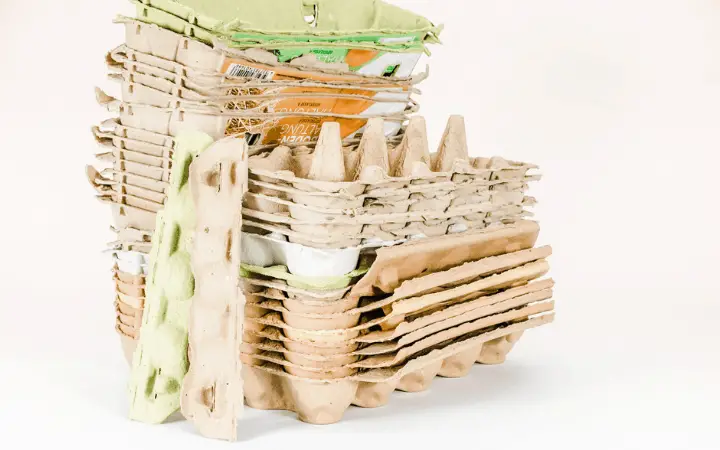
Firstly, you probably already have a stash of cardboard laying around. It’s one of the best materials for worm bedding, but needs extra prep work to aid in the decomposition process.
Brown shipping boxes, toilet paper rolls, and cardboard egg cartons work best! Be sure it’s free of any paper, glue, or labels before adding to a worm bin.
How to Prepare Cardboard for Worm Bedding
- remove any stickers, labels, or adhesives
- moisten with water until it feels like a damp sponge
- shred it into smaller pieces (damp cardboard is much easier to shred)
Note: Dried and shredded cardboard may be added to an established worm bin.
Pros
- helps aerate worm bin
- free and readily available
- good source of carbon
- helps maintain proper bin moisture levels
Cons
- shredding takes time and effort
2. Paper

Paper is another great worm bedding option that you probably have an endless supply of. As always, make sure to mix in other bedding items to ensure paper doesn’t clump or get matted together.
Note there are several types of paper that should be avoided in worm bins. Wax coated paper or paper containing questionable dyes and inks should be kept out of bedding materials.
Types of paper to avoid in worm bin: wax coated paper cups, receipts, glittery gift wrap, glossy magazine paper
Paper okay for worm bins: newspaper, paper printed with soy based ink, unbleached plain paper towels and napkins
How to Prepare Paper for Worm Bin
- shred it
- moisten as needed for easier shredding
Pros
- free and readily available
- helps regulate moisture levels
Cons
- requires extra effort to shred
- can cause matting in excess
3. Dried Leaves
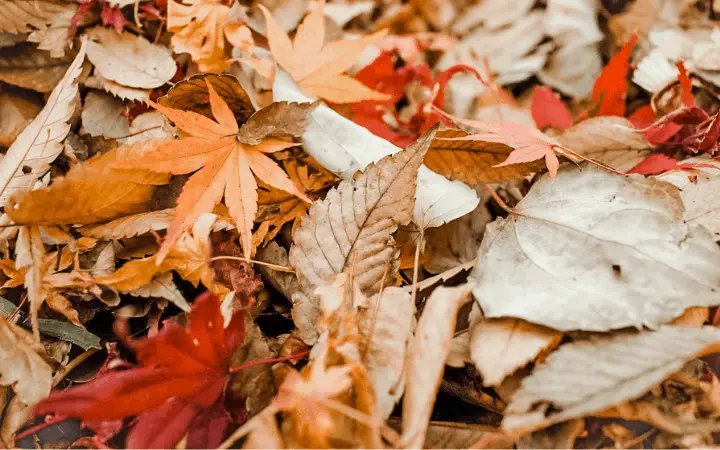
Fall leaves are a no brainer for any compost bin. They provide plenty of carbon and also structure for oxygen flow.
Save a few bags of dried leaves to add to your worm bin throughout the year, since you won’t need a lot at a time. Over time, leaves will break down on their own when stored in a bag. This creates even better microbial rich, worm bedding material.
How to Prepare Dried Leaves for Worm Bin
- crunch or shred leaves into small pieces for easier breakdown
- moisten as needed
Pros:
- free and easy to obtain in most areas
Cons:
- not available year round
- may be unavailable in areas with little tree growth
- takes extra time to process into smaller pieces
4. Soil
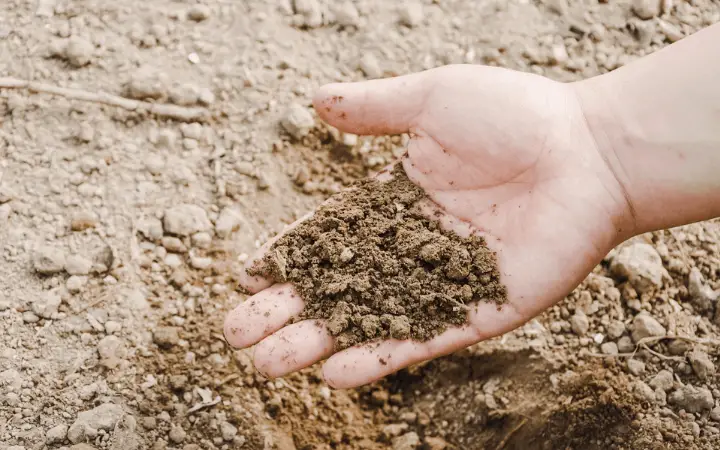
Dirt and soil are staples for any new compost bin. Soil contains beneficial microbes and bacteria that help jumpstart the decomposition process.
Plus worms are already accustomed to this medium, so they’ll feel right at home in their soil bedding.
Potting soil or regular outdoor soil are both okay for worm bins as long as they are free of strong pesticides or hard chemicals.
How to Prepare Soil for Worm Bin
- ensure soil hasn’t been treated with harmful pesticides
- moisten as needed
Pros
- free from your yard or very low cost
- introduces microbes to speed up breakdown of worm bin contents
Cons
- soil may not be readily available
5. Straw/Hay
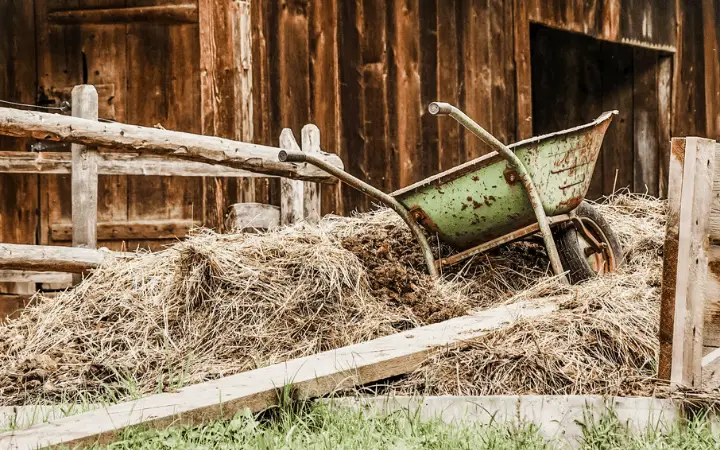
Straw and hay are key aerators for worm compost bins. Their structure ensures plenty of air flow penetrates bin contents.
This material also provides a hearty amount of carbon (approximately a carbon to nitrogen ratio of 75:1). Remember that worm bins need a healthy ratio of carbon to nitrogen to produce quality compost, or castings in this case.
How to Prepare Straw and Hay for Worm Bin
- For best results, ensure straw or hay is broken into smaller pieces. Use a lawn mower to chop it up or a sharp garden tool. Scissors or a knife could work as well, but beware of potentially dull blades afterwards.
Pros
- adds carbon to bin
- breaks down quickly
- structure ensures airflow
- inexpensive or potentially free
Cons
- extra labor needed to chop into smaller pieces
- may be unavailable depending on area
- too much can dry out worm bin
6. Clothing and Other Cloth Scraps
Give your old clothing (made of natural fibers only) a second life as worm bedding! Worms love to much on 100% cotton, linen, and silk! Any cloth scraps will work, including old towels, rags, or cloth napkins.
Beware that some clothing items may have synthetic polyester linings or thread in the stitched hems. Polyester is formed from petroleum based products and is not biodegradable.
Worms should not be eating this man made, synthetic material. Cut off any non-organic hems or linings before using.
How to Prepare Clothing Scraps for Worm Bin
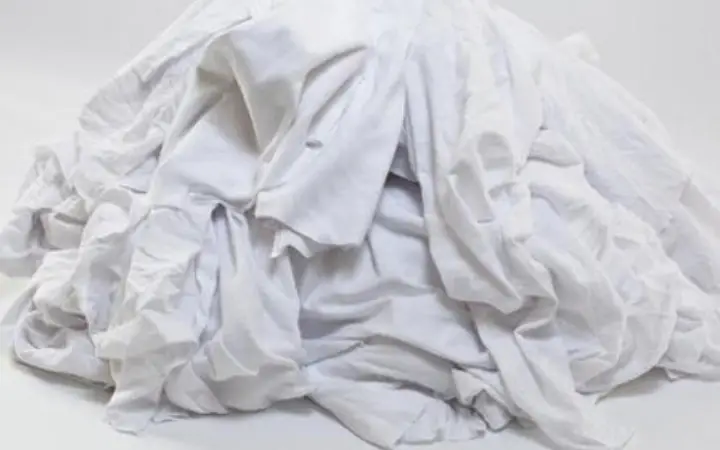
- remove any synthetic hems or lining from material
- cut or shred cloth scraps into smaller pieces for easier breakdown
Pros:
- readily available and free
- gives unusable clothing or cloth scraps new purpose
- can absorb moisture if too much water is added to worm bin
Cons:
- extra time needed for removing non-organic hem stitching/lining and cutting cloth into smaller pieces
7. Coconut Coir
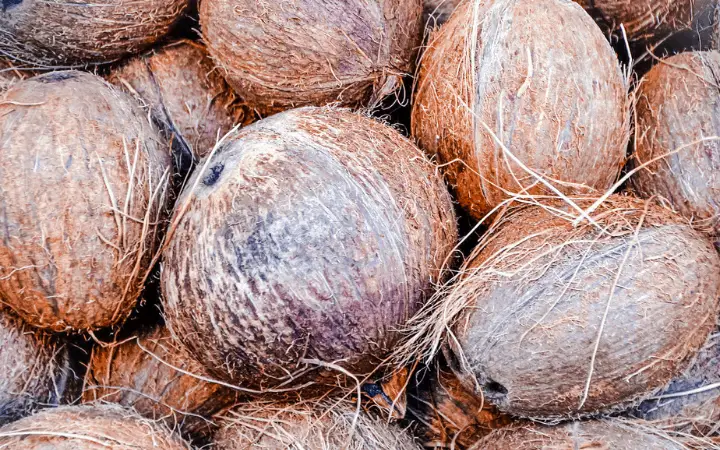
What the heck is coconut coir? Coconut coir (also known as coco coir) is everything that remains after coconut milk and coconut meat is harvested from its shell.
This coconut ‘waste’ was once discarded, but now it’s processed into coconut coir. It can be used as a soil amendment, in potting mix, or as worm bedding material.
Coco coir can be purchased in most gardening supply stores, online, or from worm farms.
How to Prepare Coco Coir for Worm Bin
No additional prepping needed! Simply add the coco coir to the worm bin.
Pros:
- fantastic for absorbing moisture
- gives a second life to a product that may otherwise be thrown away
Cons:
- no real nutritional value for worms
- not ideal for those reducing household plastic since it’s usually wrapped in plastic for retail purchase
- can take up to 3 to 4 months before becoming worm castings
Check coco coir pricing:
8. Peat Moss
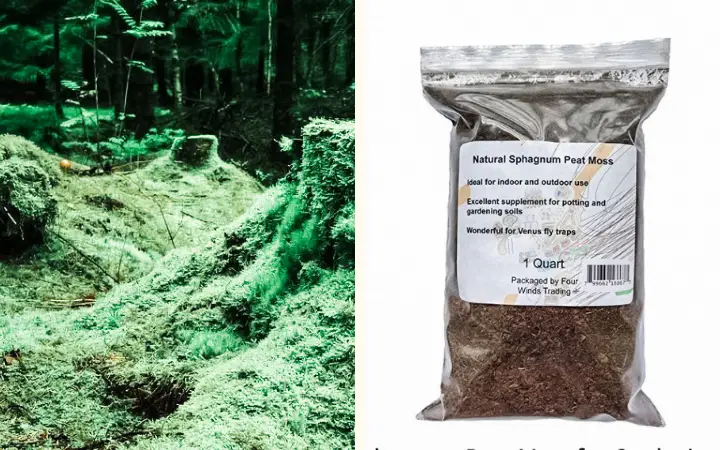
Peat moss is controversial in the gardening community for two main reasons:
- Harvesting it releases large amounts of carbon into the atmosphere. This natural and organic material is formed when mosses and other living materials decompose in peat bogs.
- It takes several million years for this decomposition to occur, due to the lack of oxygen. For this reason, peat moss is not considered a renewable resource.
Most peat bogs are located in Canada, and mining is regulated due to the nature of its formation and harvesting concerns.
This material can be purchased at most gardening supply stores or online. However, not all peat moss is safe for worm bedding usage. Stay away from peat moss with synthetic fertilizer or additives (like Miracle Gro) that help plants grow.
Some of these artificial chemicals are toxic to worms. Only purchase 100% pure peat moss.
How to Prepare Peat Moss for Worm Bin
- buy only 100% pure peat moss, free of any synthetic chemicals
- some sources suggest soaking for 24 hours, then draining off water before adding to bedding
Pros:
- retains moisture
- good soil amendment
Cons:
- not sustainable or renewable
- usually packed and sold in plastic
- harvesting releases carbon into the atmosphere
- sometimes contains synthetic fertilizers or chemical additives harmful to worms
- relatively expensive compared to other options
Check peat moss pricing below:
9. Grass Clippings
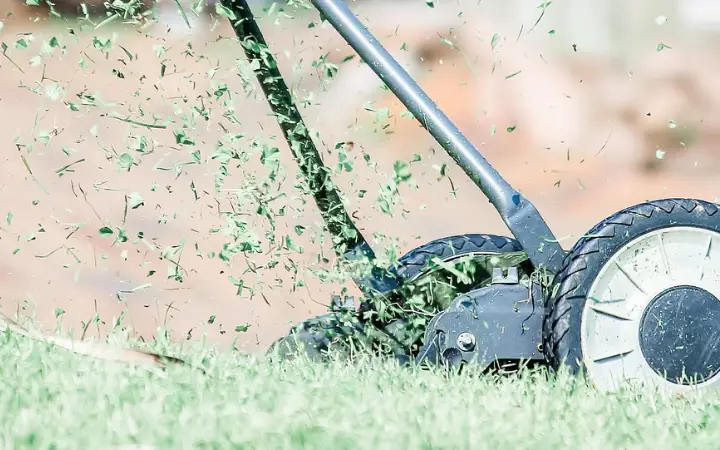
Worm bin bedding will benefit from fresh grass clippings, but a small amount goes a long way. Grass clippings are considered a green composting material because they contain a lot of nitrogen.
Worm bins need much more carbon than nitrogen, so be careful with the amount.
In addition, avoid using grass clippings treated with harsh pesticides. Pesticide residue can kill beneficial bacteria and potentially harm worms as well.
How to Prepare Grass Clippings for Worm Bin Bedding
- ensure grass was not treated with harsh chemical pesticides
- optional: allow grass clippings to dry out a bit to reduce nitrogen content
Pros:
- free if you mow your own yard
- abundant and easy to obtain, even if you don’t have a yard
- only a small amount needed due to elevated nitrogen content
Cons:
- can easily add too much nitrogen to worm bin
- may cause matting in excess
10. Aged Compost for Worm Bedding
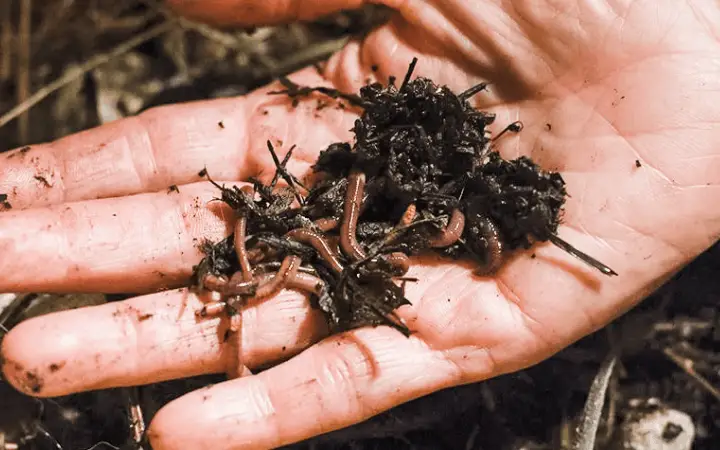
Soil and aged compost are very similar materials used oftne for worm bin bedding. Compost is a bit superior because it’s already full of beneficial nutrients and microbes that worms love.
Compost doesn’t need to be completely broken down, but particles should be small for effective bedding.
How to Prepare Compost for Worm Bin
- ensure compost is moist before adding to worm bin
- compost material should be aged and nearly broken down for best results
Pros:
- free if you compost at home
- contains beneficial nutrients and microbes that aid in worm’s digestion
- worms will feel at home
Cons:
- not as cost effective as other options if purchasing
11. Wood Shavings
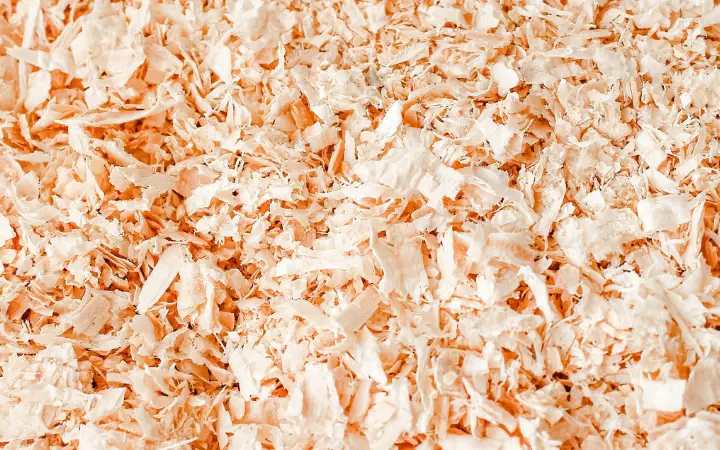
Wood shavings and sawdust should be added to worm bins in moderation. This bedding material absorbs water and can easily dry out the bin.
There’s been some debate on whether or not worms can eat and digest wood fibers since they don’t have teeth.
Worms can actually digest these tough fibers with the help of bacteria and fungi in their digestive system. In addition, they have gizzards (much like birds) that grind food and bedding into smaller particles to aid in digestion.
Like grass, wood and lumber is sometimes treated for pesticides. Only use wood shavings free of these harsh chemicals.
How to Prepare Wood Shavings for Worm Bin
- ensure wood is free from insecticides or pesticides
- moisten wood shavings to the level of a damp, wrung out sponge
- remove any hard or intact pieces so worms don’t accidentally puncture themselves
Pros:
- provides structure in worm bin to aid in air flow
- free if you can find a lumber yard or tree service willing to donate
Cons:
- can zap moisture from worm bin in excess
- hard pieces can puncture worms
- may not be readily available
12. Manure

Worm bins and manure are like peas in a pod! They belong together. Manure, like soil and compost, contains loads of good bacteria and microbes that worms love to feast on.
NOTE: Only use manure from animals that have not been ‘dewormed’ because this pesticide lingers in waste and will kill red wigglers in a worm bin.
Chickens, rabbits, and horses don’t typically need deworming medication. However sheep, goats, and cattle are regularly dewormed so avoid manure from these animals for vermicompost bins.
In addition, beware of adding too much manure to your worm bin. Animal manure is considered a nitrogen rich, green material for composting.
Since worm bins need mainly carbon rich sources, a little poo goes a long way! Stay away from dog or cast waste for worm bin bedding. This type of pet waste can contain pathogens that are harmful for worms and humans.
How to Prepare Manure for Worm Bin Bedding
- ensure manure is from an animal that has not been ‘dewormed’
- allow manure to age to reduce moisture and nitrogen content
Pros:
- free from local farms or if you have the following animals: cow, horse, sheep, chicken, rabbit
Cons:
- adds too much nitrogen in excess
- not always readily available
What Not to Use for Worm Bedding
Best practices include avoiding anything with toxic additives, synthetic materials, harsh pesticides, or rough and pointy objects that could puncture worm skin.
Avoid using the following materials for worm bin bedding:
- manure from animals that have been treated with deworming medicine (typically cows, sheep, and goats)
- glossy magazine paper: ink may contain heavy metals that can build up in worm bin and cause damage
- yard waste or grass clippings with pesticide residue
- wood chips or shavings from lumbar treated with pesticides
- splintery wood or weeds/yard waste with thorns
- anything inorganic (pastic, glass, metal, polymers, and any sort of synthetic material)
- wood ash: contains alkaline (high pH) substance that can kill living worm tissue
Final Thoughts on Worm Bin Bedding Options
To summarize, the healthiest worm bedding will be a diverse combination of several different organic materials that provide adequate moisture levels, proper carbon to nitrogen balance, and appropriate oxygen flow.
Avoid any synthetic materials, materials exposed to harsh pesticides, thorny plants, or splintery wood.
Lastly, be sure to periodically check moisture levels and fluff the worm bin contents regularly.
Did we miss any of your favorite worm bin bedding materials?


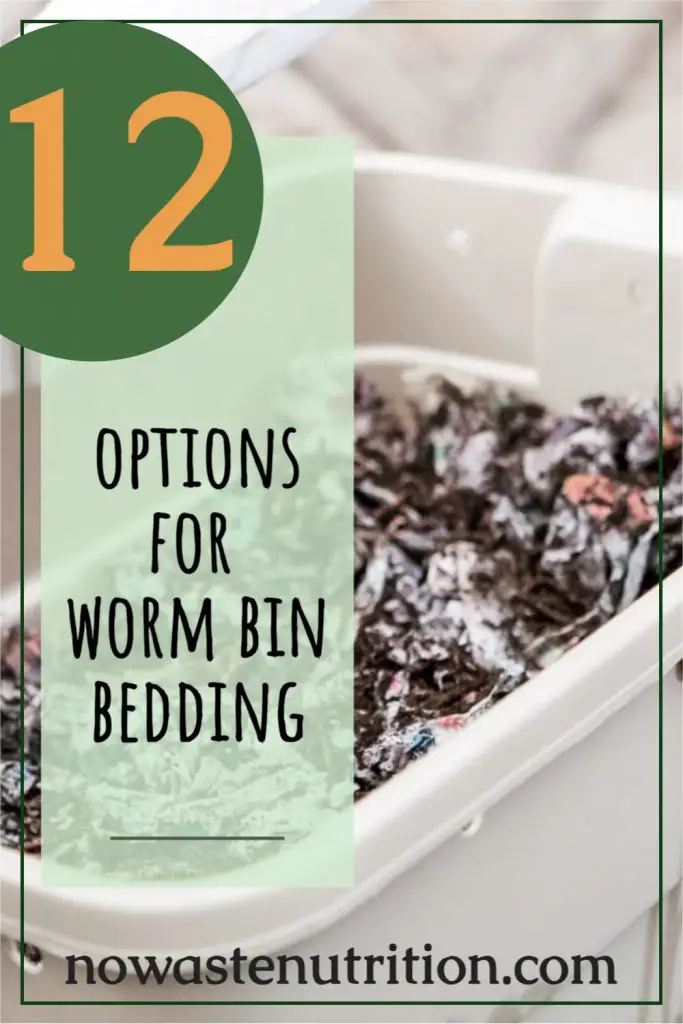
What about using bamboo paper towels and napkins? Used coffee filters? Recycled paper towels and napkins?
Thanks for any guidance.
All those would work too as long as they are produced naturally without any dyes or coatings.